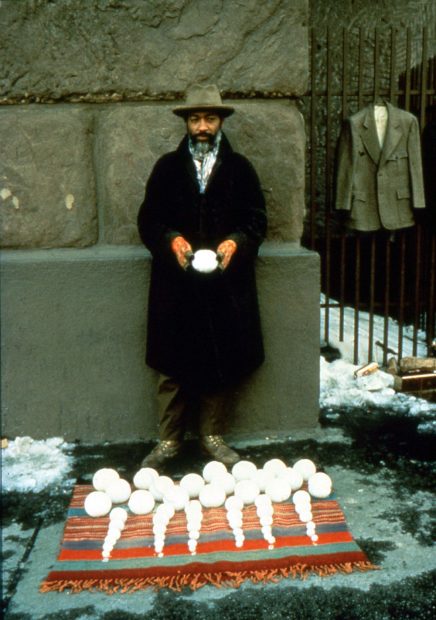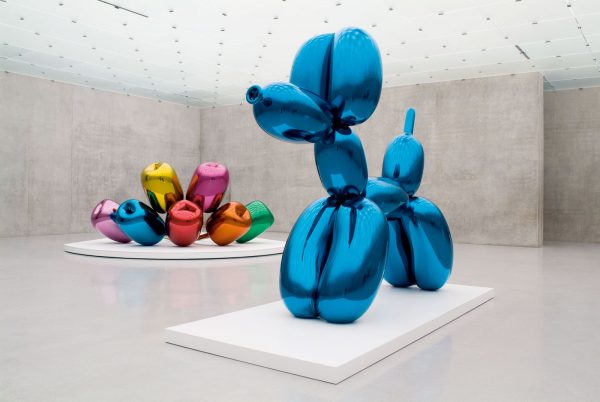“Trust me, it is possible to be an artist and have nothing for sale.” – Jim Pirtle

I studied entrepreneurship in business school, and I’ll never forget one time when a strategy professor rather theatrically asked me for my wallet in front of the class. He was making a point about what business is all about: getting people to hand over their money in exchange for something. The Goal — as the classic b-school novel teaches — is to make money.
The word “entrepreneur” comes from the French word entreprendre, meaning “to undertake,” and it has a general etymological sense of being about new ventures and self-reliance. We use it to describe people who start businesses from scratch in order to engage in the basic transaction of something-for-money.
But not all start-up businesses are entrepreneurial; there is a difference between true entrepreneurship and running a small business. A person who starts a mom-and-pop corner store selling sodas and toothpaste is a small business owner, not an entrepreneur. The 20th-century economist Peter Drucker wrote, “To be entrepreneurial, an enterprise has to have special characteristics over and above being new and small. Indeed, entrepreneurs are a minority among new businesses. They create something new, something different; they change or transmute values… The entrepreneur always searches for change, responds to it, and exploits it as an opportunity.”
Entrepreneurship is risky: the rate of failure is high, and many entrepreneurs go broke in their ventures. But if you are successful as an entrepreneur, you can make far more money than you can in a more traditional career. Furthermore, there is a freedom in starting a business that does not exist in getting a “normal” job. Entrepreneurship thus attracts people of a certain mentality: risk takers, wildcatters, people who value things like independence and control over one’s fate more than they value security. People who dream about changing the world.
We admire entrepreneurs greatly in America. There’s a reason that every business school now has a fully developed entrepreneurship track, if not an entire program dedicated to it. And clearly, our understanding of what entrepreneurs do is similar to our understanding of what artists do. Artists are risk-takers. Artists change or transmute values. Artists dream about changing the world.
And so many people think that artists are entrepreneurs. Indeed, a whole cottage industry of rather silly career training for artists has arisen based on this notion (“Learn How to Break Into the Art Market in One Day!”). It’s true that artists must be resourceful, and that it’s helpful for them to be good at business, and that they start things from scratch. But artists having to find a way to survive while they make their art is not the same as entrepreneurship. And artists who enter into so-called art with the idea that they are starting a business — a transaction of something for money — are almost never making art. They are making something else, usually decoration. It’s a gamble, sure, but it’s certainly not a new idea, either as business or as art.
There are exceptions that prove the rule, of course. Andy Warhol famously said that good business is the best art, and in his pro-capitalist Rozz-Tox Manifesto from 1980, the artist Gary Panter said, “We are building a business-based art movement. This is not new. Admitting it is.” In a 2014 interview for the New York Times, Olafur Eliasson humorously described the difficulty of executing a large-scale project in Venice, saying “If you can make a show in Venice, which is the most difficult damned thing one can do, not just because working with Italians is a mess, but also because you’re in a city on water in the middle of nowhere and getting a hammer and a nail is impossible . . . you can make a show on the moon. So as an artist, you become an entrepreneur by definition.”
But even artists who are good at the administrative side of running large studios with many employees are not entrepreneurs. These activities look similar and involve many of the same skills, but there is a seminal, intrinsic difference between entrepreneurship and art, which is the purpose of the activity itself: the ultimate goal of entrepreneurship is to make money. There is no goal with art.
Consider the most obvious artist-as-entrepreneur: Jeff Koons. Like many artists, Koons makes products that he exchanges for money. If you consider his primary material to be stainless steel, then his work is not very interesting. It’s just overpriced decoration, no better or worse (albeit larger) than something you’d find at Target. But if you consider Koons’ material to be the art world itself — that his art is a form of social sculpture that deals with the business of the art world, that he embraces the chaos and unpredictability of human beings making money and acquiring power within in a system (in his case, the art market) as the essential, very abstract, materials of his practice… well, then it becomes much more interesting.

Many artists use money in their work, either physically as a material, or conceptually, as in the case of David Hammons’ Bliz-aard and Ball Sale from 1983, when the artist sold snowballs on the street during a blizzard in New York City. Exploring ideas around money or business or value does not cheapen art; indeed, as Dave Hickey pointed out in his book Air Guitar, money and art are parallel systems of value, different and unique. Probing where and how these two systems intersect can be interesting fodder for artists — and many artists have found a way to survive such that the vehicle of their survival, i.e. their “job,” is their “art.”
But the minute an artist’s primary goal becomes money-making, the game is up. The art starts looking like merchandise designed to appeal to a certain buyer category, whether it be people shopping for art to decorate their homes or their vanity museums, or the nonprofit industrial complex. Different ‘art’ of this type works for different customers. Just like toothpaste.
Whereas art that is fundamentally about ideas can scratch an itch that money will never touch. It alerts us to what’s important in life. Which is why we need it, always. And why its price tag is immaterial.


